2018-07-26 - Nº 169
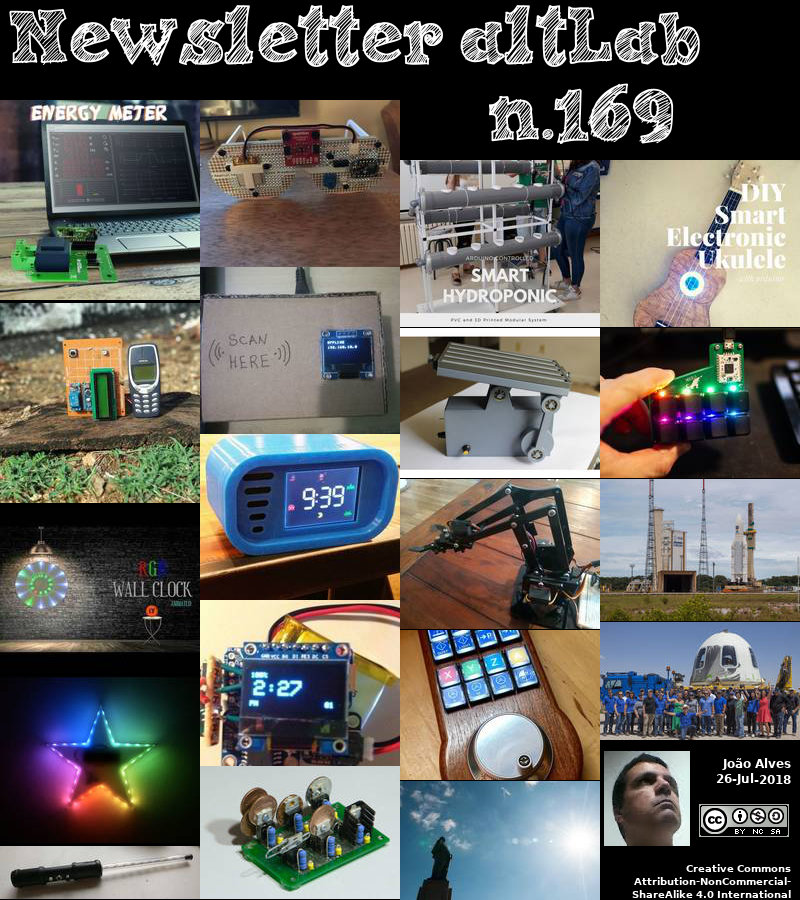
Editorial
Esta é a Newsletter Nº 169 que se apresenta com o mesmo formato que as anteriores. Se gostar da Newsletter partilhe-a!
Todas as Newsletters encontram-se indexadas no link.
Esta Newsletter tem os seguintes tópicos:
Faz hoje anos que nascia, em 1799, Isaac Babbitt. Este inventor norte-americano foi responsável pela invenção de uma liga (metal de babbitt: estanho 89%, antimónio 7%, cobre 4%.) amplamente utilizada para redução de fricção de rolamentos de babbitt. Em 1924, ele fundou uma empresa que se tornou a Reed & Barton, a mais antiga ourivesaria independente do país. A partir de 1834, foi superintendente da Fundição e Obra Ordinária da Alger (South Boston Iron Works), onde lançou o primeiro canhão de latão fabricado nos EUA. Patenteou a invenção bem sucedida de uma caixa para eixos ferroviários 17 de Julho de 1739, que sugeriu os rolamentos da liga.
Faz também anos hoje que nascia, em 1863, Paul Walden. Este químico letão, enquanto ensinava em Riga, descobriu a inversão de Walden, uma reversão da configuração estereo-química que ocorre em muitas reacções de compostos covalentes (1896). Devido a essa descoberta, o nome de Walden é mencionado quase em todos os livros didácticos sobre química orgânica publicados em todo o mundo. Walden revelou a auto-racemização e criou as fundações na electroquímica de soluções não aquosas. Walden também é conhecida pela regra de Walden, que relaciona a condutividade e a viscosidade de soluções não aquosas.
Faz igualmente anos hoje que nascia, em 1916, John R. Whinnery. Este Engenheiro electrotécnico norte-americano ficou conhecido pelo seu trabalho na teoria de microondas e experimentação a laser. Ele trabalhou no problema da modulação a laser He-Ne, a transmissão de luz laser para comunicação óptica e efeitos térmicos fotográficos. Mais tarde, ele mudou o seu campo de pesquisa para electrónica quântica e opto-electrónica. Ele é co-autor do livro didáctico clássico, Fields and Waves in Communication Electronics, antes de ter um doutorado enquanto trabalhava 6 dias por semana em micro-ondas na General Electric durante a Segunda Guerra Mundial.
Por fim, faz anos hoje que nascia, em 1925, Joseph Engelberger. Este Engenheiro norte-americano que, com George Devol, desenvolveu o primeiro robô industrial nos Estados Unidos na década de 1950, o Unimate. Engelberger é muitas vezes referido como o "pai da robótica". Quando ele e o seu sócio fundaram a Unimation em 1956, a empresa foi a primeira grande fabricante de braços robóticos industriais nos EUA. Em 1962, eles instalaram seus primeiros robôs industriais na fabricante de automóveis General Motors.
Nesta semana que passou ficámos a conhecer as ambições da Michelin para 2048: os pneus Michelin serão fabricados com 80% de materiais sustentáveis. 100% dos pneus serão reciclados. Hoje, a taxa de recuperação mundial de pneus é de 70% e a taxa de reciclagem é de 50%. Actualmente, os pneus Michelin são fabricados com 28% de materiais sustentáveis (26% de materiais de origem biológica, como borracha natural, óleo de girassol, limoneno etc., e 2% de materiais reciclados, como pneus de aço ou reciclados). Para um futuro sustentável, a Michelin está investindo em tecnologias de reciclagem de alta tecnologia para poder aumentar esse conteúdo para 80% de materiais sustentáveis.
Também esta semana foi anunciado o lançamento do KiCad 5.0. Quase um ano após o lançamento do KiCad 4.0.7, esta nova versão apresenta melhorias em todos os componentes da solução. Destas destacam-se as seguintes: Novas bibliotecas para símbolos e modelos 3D (partes aderem ao KiCad Library Convention (KLC) e são organizadas de maneira diferente das bibliotecas V4); Alterações na biblioteca actualizadas automaticamente na página da biblioteca do site do KiCad; Um novo visualizador em 3D; Nova arquitectura de plug-ins do modelo 3D; Suporte para esquemas de cores arbitrários (GerbView e PcbNew: somente em telas modernas); Novo estilo de destaque para desambiguar selecções para maior clareza; Melhoria do comportamento do zoom ao usar trackpads no MacOS; Algumas melhorias com o suporte a hidpi; Equações matemáticas simples em alguns campos de entrada; Melhorias significativas nas bibliotecas de símbolos, pegadas e modelos 3D; Mais modelos para plataformas de desenvolvimento comuns, como Arduino e Raspberry Pi; Editor de variáveis de ambiente para gestão de variáveis de ambiente interno; etc.
Nesta sexta-feira que vem, dia 27 de Julho, ocorrerá o eclipse lunar total será a mais longa lua vermelha visível neste século, até 2123. Durante cerca de 50 minutos será possível observar este fenómeno. O eclipse lunar total, que terá uma duração de cerca de uma hora e 45 minutos, será visível a partir da Austrália, Antárctida, Ásia, África, Médio Oriente, Europa, América do Sul, sul do Oceano Pacífico, oceano Índico e oceano Atlântico. América do Norte e Gronelândia são duas regiões desaconselhadas para quem não queira perder o fenómeno. As hipóteses de se avistar a Lua a partir de algum local daquelas duas áreas geográficas são praticamente nulas. Em Portugal e para referencia geográfica, em Faro, a lua vai nascer às 20:38, em Lisboa às 20:47, no Porto às 20:51 em Ponta Delgada às 20:52 e no Funchal às 21:05. Se estiver num destes locais procure uma localização com um horizonte límpido, a nascente, leste, para poder ver a lua a subir no céu. Por definição, o eclipse total da Lua é um fenómeno que ocorre quando a Terra se encontra entre o Sol e a Lua, "de forma a projectar a sua sombra na Lua, e a Lua atravessa completamente a sombra da Terra". O eclipse lunar acontece quando coincidem a fase de Lua cheia e a passagem da Lua pelo seu nodo orbital.
Outra curiosidade espacial é que os astrónomos calcularam que a distância da Terra a Marte será de meros 57,6 milhões de quilómetros na próxima terça-feira, 31 de Julho. Na semana seguinte, na sexta-feira, 11 de Agosto, Marte estará em oposição ao sol. Isso significa que os dois objectos estarão nos lados opostos da Terra. É também quando partes da Ásia, África, Austrália, América do Sul e Europa receberão um eclipse solar parcial. É uma época movimentada do ano para a astronomia.
Na Newsletter desta semana apresentamos diversos projetos de maker assim como um modelo 3D que poderá ser útil. É apresentada a revista MagPI nº72.
 João Alves ([email protected])
João Alves ([email protected])
O conteúdo da Newsletter encontra-se sob a licença  Creative Commons Attribution-NonCommercial-ShareAlike 4.0 International License.
Creative Commons Attribution-NonCommercial-ShareAlike 4.0 International License.
Novidades da Semana

Michelin's 2048 Ambitions: Michelin Tires Will Be Made Using 80 Percent Sustainable Materials 100 Percent Of Tires Will Be Recycled
"Today, the world-wide recovery rate for tires is 70 percent and the recycling rate is 50 percent. Michelin tires are currently made using 28 percent sustainable materials (26 percent bio-sourced materials like natural rubber, sunflower oil, limonene etc., and 2 percent recycled materials such as steel or recycled powdered tires). For a sustainable future, Michelin is investing in high technology recycling technologies to be able to increase this content to 80 percent sustainable materials. Sustainable Materials The route to this ambitious sustainable material target will be achieved by research programs into bio-sourced materials like Biobutterfly and working with Michelin’s high-level partners, and the advanced technologies and materials that are being developed in these partnerships. The Biobutterfly program was launched in 2012 with Axens and IFP Energies Nouvelles to create synthetic elastomers from biomass such as wood, straw or beet. Michelin is developing innovative solutions today in order to integrate more and more recycled and renewable materials in its tires, while continuing to improve performance, including 30% of recycled materials by 2048." [...]
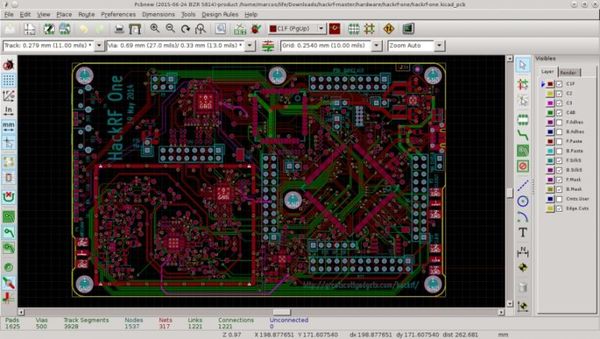
KiCad 5 - A New Generation
"Almost a year after the release of KiCad 4.0.7, the KiCad development team is proud to present a new and improved KiCad 5.0 release! The stable release version 5.0.0 is made from the stable 5.0 branch. KiCad binaries should be available now or in the very near future for download for Windows, macOS and Linux. See the download page for guidance. Instructions for packagers can be found on the download page describing how to build from source . Below are also some packaging packaging related changes since the 4.0 releases." [...]

Friday's total lunar eclipse will be longest blood moon visible this century, until 2123
"The full moon will turn blood red on July 27 as the longest total lunar eclipse of the century takes place in the skies from Australia through Africa. A total lunar eclipse occurs when the moon passes through the Earth’s innermost shadow. When this happens, the moon turns rusty orange or deep red in color and is how it earned the nickname of a blood moon eclipse. The red moon will pair well with Mars, which reaches opposition just before the eclipse and will also appear orange or red in color. Unlike a solar eclipse, no special equipment or glasses are needed to view a total lunar eclipse, although onlookers will require cloud-free weather. Friday’s lunar eclipse will be particularly special as it is the longest total lunar eclipse of the 21st century." [...]
Outras Notícias
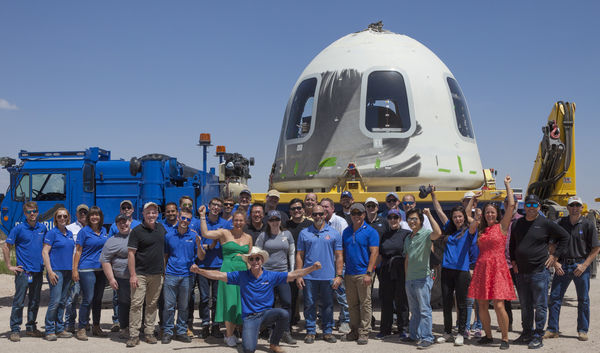
Payload manifest on mission 9
"An awesome feature of New Shepard is its modular interior design. While in the future it will feature six seats to fly people, we’re already flying science and education experiments for microgravity research. On Mission 9, we welcome our third round of payload customers from commercial companies, universities and space agencies. They will share the cabin with Blue Origin’s Mannequin Skywalker for their flight to space. Below is a selection of customers slated to fly on Mission 9: Schmitt Space Communicator Xperimental (SC1-x) Solstar (Santa Fe, NM), developed with private funding and with support from NASA’s Flight Opportunities Program On New Shepard Mission 8, Solstar demonstrated the first commercial WiFi in space. On this reflight, they will take advantage of the Crew Capsule’s high altitude escape and continue testing WiFi access throughout the flight." [...]

Learn at your own pace with Microsoft Quantum Katas
"For those who want to explore quantum computing and learn the Q# programming language at their own pace, we have created the Quantum Katas – an open source project containing a series of programming exercises that provide immediate feedback as you progress. Coding katas are great tools for learning a programming language. They rely on several simple learning principles: active learning, incremental complexity growth, and feedback. The Microsoft Quantum Katas are a series of self-paced tutorials aimed at teaching elements of quantum computing and Q# programming at the same time. Each kata offers a sequence of tasks on a certain quantum computing topic, progressing from simple to challenging. Each task requires you to fill in some code; the first task might require just one line, and the last one might require a sizable fragment of code." [...]

Two big rockets launched early Wednesday-then one landed in high seas
"One Ariane 5. One Falcon 9. Fourteen satellites. It's a party. Both rockets hit their instantaneous launch windows on Wednesday morning, with the Ariane 5 booster lifting off from Kourou, French Guiana under mostly sunny skies and the Falcon 9 rocket ascending from California through a thick fog layer. The upper stages of both rockets are now in their coast phases before deployment of their satellite payloads." [...]
Ciência e Tecnologia

Researchers Move Closer to Completely Optical Artificial Neural Network
"Optical training of neural networks could lead to more efficient artificial intelligence Researchers have shown that it is possible to train artificial neural networks directly on an optical chip. The significant breakthrough demonstrates that an optical circuit can perform a critical function of an electronics-based artificial neural network and could lead to less expensive, faster and more energy efficient ways to perform complex tasks such as speech or image recognition. “Using an optical chip to perform neural network computations more efficiently than is possible with digital computers could allow more complex problems to be solved,” said research team leader Shanhui Fan of Stanford University. “This would enhance the capability of artificial neural networks to perform tasks required for self-driving cars or to formulate an appropriate response to a spoken question, for example. It could also improve our lives in ways we can’t imagine now.” An artificial neural network is a type of artificial intelligence that uses connected units to process information in a manner similar to the way the brain processes information. Using these networks to perform a complex task, for instance voice recognition, requires the critical step of training the algorithms to categorize inputs, such as different words." [...]
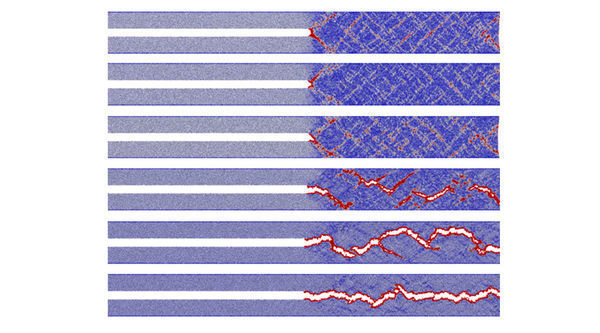
New Computer Model Predicts How Fracturing Metallic Glass Releases Energy at the Atomic Level
"Researchers developed a new computer model that shows how metallic glass behaves under stress to one day build better materials. Metallic glasses -- alloys lacking the crystalline structure normally found in metals -- are an exciting research target for tantalizing applications, including artificial joints and other medical implant devices. However, the difficulties associated with predicting how much energy these materials release when they fracture is slowing down development of metallic glass-based products. Recently, a pair of researchers from Rensselaer Polytechnic Institute in Troy, New York, developed a new way of simulating to the atomic level how metallic glasses behave as they fracture. This new modeling technique could improve computer-aided materials design and help researchers determine the properties of metallic glasses. The duo reports their findings in the Journal of Applied Physics, from AIP Publishing." [...]
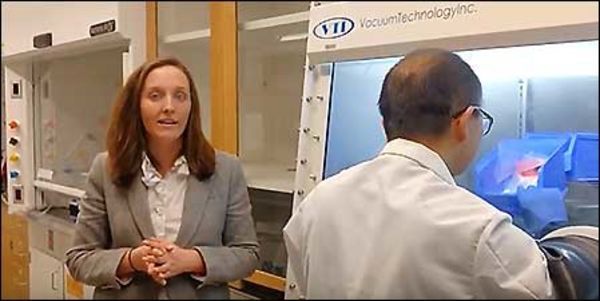
Safe solid-state lithium batteries herald 'paradigm shift' in energy storage
"The race to produce safe, powerful and affordable solid-state lithium batteries is accelerating and recent announcements about game-changing research using a solid non-flammable ceramic electrolyte known as garnet has some in the race calling it revolutionary. “This is a paradigm shift in energy storage,” said Kelsey Hatzell, assistant professor of mechanical engineering. A paper – “The Effect of Pore Connectivity on Li Dendrite Propagation Within LLZO Electrolytes Observed with Synchrotron X-ray Tomography” – describing her novel research on the failure points of a garnet electrolyte was published online in March in the American Chemical Society’s Energy Letters, which was among the most read ACS Letters articles that month. Lithium-ion batteries typically contain a liquid organic electrolyte that can catch fire (watch the video). The fire risk is eliminated by the use of a non-flammable garnet-based electrolyte. Replacing liquid electrolytes with a solid organic like garnet also potentially lowers the cost by increasing battery life." [...]

A physics treasure hidden in a wallpaper pattern
"An international team of scientists has discovered a new, exotic form of insulating material with a metallic surface that could enable more efficient electronics or even quantum computing. The researchers developed a new method for analyzing existing chemical compounds that relies on the mathematical properties like symmetry that govern the repeating patterns seen in everyday wallpaper. “The beauty of topology is that one can apply symmetry principles to find and categorize materials,” said B. Andrei Bernevig, a professor of physics at Princeton. The research, appearing July 20 in the journal Science, involved a collaboration among groups from Princeton University, the University of Pennsylvania (Penn), Sungkyunkwan University, Freie Universität Berlin and the Max Planck Institute of Microstructure Physics. The discovery of this form of lead-strontium (Sr2Pb3) completes a decade-long search for an elusive three-dimensional material that combines the unique electronic properties of two-dimensional graphene and three-dimensional topological insulators, a phase of matter discovered in 2005 in independent works by Charles Kane at Penn and Bernevig at Princeton. Some scientists have theorized that topological insulators, which insulate on their interior but conduct electricity on their surface, could serve as a foundation for super-fast quantum computing." [...]

Molecular clock could greatly improve smartphone navigation
"Novel chip keeps time using the constant, measurable rotation of molecules as a timing reference. MIT researchers have developed the first molecular clock on a chip, which uses the constant, measurable rotation of molecules — when exposed to a certain frequency of electromagnetic radiation — to keep time. The chip could one day significantly improve the accuracy and performance of navigation on smartphones and other consumer devices. Today’s most accurate time-keepers are atomic clocks. These clocks rely on the steady resonance of atoms, when exposed to a specific frequency, to measure exactly one second. Several such clocks are installed in all GPS satellites." [...]
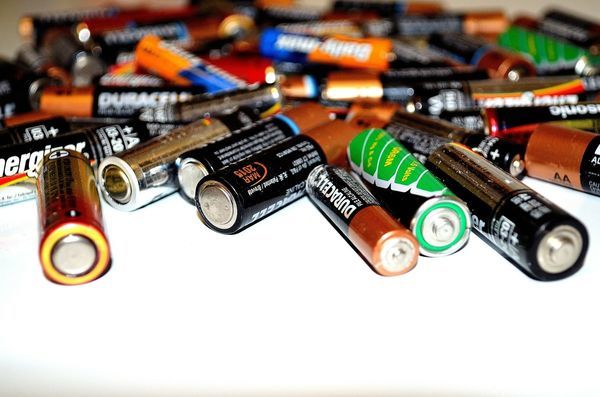
Liquid microscopy technique reveals new problem with lithium-oxygen batteries
"Using an advanced, new microscopy technique that can visualize chemical reactions occurring in liquid environments, researchers have discovered a new reason lithium-oxygen batteries — which promise up to five times more energy than the lithium-ion batteries that power electric vehicles and cell phones — tend to slow down and die after just a few charge/discharge cycles. They report their findings in the journal Nano Energy. “What we were able to see for the first time is that lithium peroxide develops in the liquid electrolyte of lithium-oxygen batteries, and is a contributor to the slow down and ultimate death of these batteries,” said Reza Shahbazian-Yassar, associate professor of mechanical and industrial engineering in the University of Illinois at Chicago College of Engineering and lead author of the paper. “This is a newly discovered reason why these promising batteries have such a steep drop off in efficiency and yield after relatively few charge/discharge cycles.” Lithium-oxygen batteries have been tantalizing to battery researchers for years because of their potential high energy density. But they tend to slow down and stop working relatively quickly compared to other batteries. One of the reasons for this loss of power is that a byproduct of the chemical reactions that take place inside the battery – lithium peroxide — builds up on the electrodes of the battery." [...]
Millimetre-scale silicon chip generates quantum-random-numbers for information security
"A team of international researchers, led by quantum technology experts from the University of Bristol, have shown that a chip-based device can be used to generate quantum-based random numbers at gigabit per second speeds. The tiny device, with a footprint of just a millimetre square, requires little power to operate and could enable stand-alone random number generators and be incorporated into laptops and smartphones to offer real-time encryption. PhD student Francesco Raffaelli from the University of Bristol’s Quantum Engineering Technology Labs (QET Labs), has led the work, which is presented today in The Optical Society of America’s journal Optics Express. He said: “Randomness is needed to secure our communication and storage of information using data encryption. Physicists have known for some time that the nature of quantum mechanics can make randomness that is not easy to copy and impossible to predict.” “We designed and tested a chip made of silicon and works using light to do just this. It integrates all the required optical components on one chip that can be made with industry-standard fabrication — this brings the power of quantum randomness much closer to being integrated into our personal computers and our smartphones.” The researchers use a technique where single particles of light called photons are randomly emitted from a diode laser in such a way that when they enter the silicon chip, a random electrical signal is output, that is impossible to predict." [...]
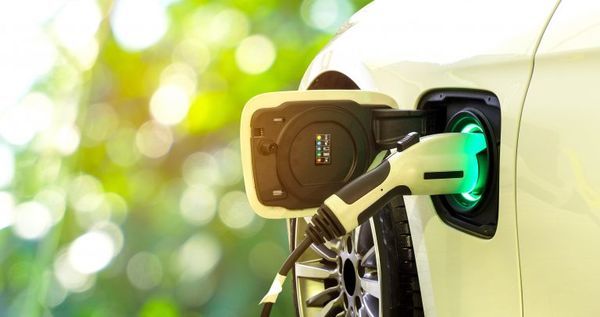
The drive for more energy-efficient electric vehicles
"Novel system achieves significant reductions in energy consumed for heating and cooling electric car interiors. The drive for more energy-efficient electric vehicles © Smile Fight, Shutterstock Technological developments and the increased focus on alternative sources of energy have led to a renewed interest in electric vehicles (EVs). In 2017, almost 1.3 million EVs were sold around the world, representing a 57 % increase compared to the previous year’s sales. As this upward trend shows no signs of changing, dealing with certain inefficiencies of EVs is becoming a priority. With this in mind, the EU-funded project JOSPEL has focused on reducing the energy consumed in EVs for passenger comfort. Current heating, ventilation and air conditioning technologies reduce the potential driving range of EVs by up to 25 %." [...]

World's fastest man-made spinning object could help study quantum mechanics
"Researchers have created the fastest man-made rotor in the world, which they believe will help them study quantum mechanics. At more than 60 billion revolutions per minute, this machine is more than 100,000 times faster than a high-speed dental drill. The findings were published in the journal Physical Review Letters. “This study has many applications, including material science,” said Tongcang Li, an assistant professor of physics and astronomy, and electrical and computer engineering, at Purdue University. “We can study the extreme conditions different materials can survive in.” Li’s team synthesized a tiny dumbbell from silica and levitated it in high vacuum using a laser. The laser can work in a straight line or in a circle – when it’s linear, the dumbbell vibrates, and when it’s circular, the dumbbell spins." [...]

NUST MISIS Scientists Present Metamaterial for Solar Cells and Nanooptics
"A research team from the NUST MISIS Laboratory of Superconducting Metamaterials led by Alexey Basharin, Senior Lecturer and Candidate of Technical Sciences, has developed a metamaterial-dielectric that has unique characteristics and is easy to manufacture. This ease of access will allow researchers to use it to create the latest optical devices. The research results were published in Laser&Photonics Reviews. Anapole is a non-emitting diffuser transparent to electromagnetic radiation. In 2017, a research team from the Laboratory of Superconducting Metamaterials and their colleagues from the University of Crete (Heraklion) established that anapole is an ideal resonator. When irradiated from the outside, anapole retains all the energy inside itself, while the electromagnetic oscillations fade very slowly." [...]
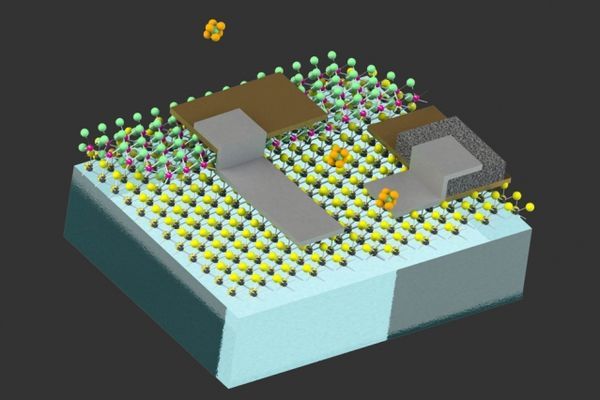
Cell-sized robots can sense their environment
"Made of electronic circuits coupled to minute particles, the devices could flow through intestines or pipelines to detect problems. Researchers at MIT have created what may be the smallest robots yet that can sense their environment, store data, and even carry out computational tasks. These devices, which are about the size of a human egg cell, consist of tiny electronic circuits made of two-dimensional materials, piggybacking on minuscule particles called colloids. Colloids, which insoluble particles or molecules anywhere from a billionth to a millionth of a meter across, are so small they can stay suspended indefinitely in a liquid or even in air. By coupling these tiny objects to complex circuitry, the researchers hope to lay the groundwork for devices that could be dispersed to carry out diagnostic journeys through anything from the human digestive system to oil and gas pipelines, or perhaps to waft through air to measure compounds inside a chemical processor or refinery. “We wanted to figure out methods to graft complete, intact electronic circuits onto colloidal particles,” explains Michael Strano, the Carbon C. Dubbs Professor of Chemical Engineering at MIT and senior author of the study, which was published today in the journal Nature Nanotechnology." [...]

Demon in the details of quantum thermodynamics
"Researchers find quantum ‘Maxwell’s Demon’ may give up information to extract work Thermodynamics is one of the most human of scientific enterprises, according to Kater Murch, associate professor of physics in Arts & Sciences at Washington University in St. Louis. “It has to do with our fascination of fire and our laziness,” he said. “How can we get fire” — or heat — “to do work for us?” Now, Murch and colleagues have taken that most human enterprise down to the intangible quantum scale — that of ultra low temperatures and microscopic systems — and discovered that, as in the macroscopic world, it is possible to use information to extract work. There is a catch, though: Some information may be lost in the process. “We’ve experimentally confirmed the connection between information in the classical case and the quantum case,” Murch said, “and we’re seeing this new effect of information loss.” The results were published in the July 20 issue of Physical Review Letters. The international team included Eric Lutz of the University of Stuttgart; J. J. Alonzo of the University of Erlangen-Nuremberg; Alessandro Romito of Lancaster University; and Mahdi Naghiloo, a Washington University graduate research assistant in physics." [...]
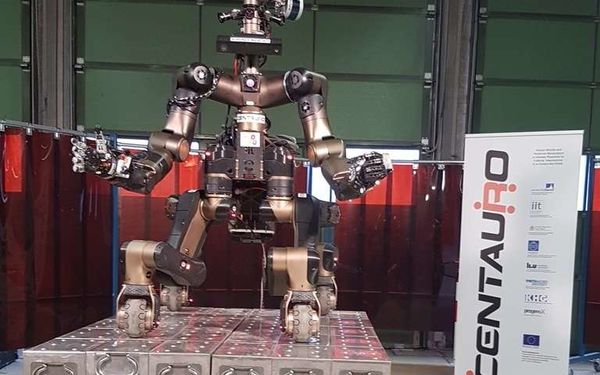
The Centauro: A new disaster response robot to assist rescue workers to operate safely
"Researchers at IIT-Istituto Italiano di Tecnologia developed, assembled and tested a new disaster response robot called the Centauro, a Centaur-like robot consisting of a four-legged base and an anthropomorphic upper body. The robot is capable of robust locomotion, high strength manipulation and harsh interactions that may be necessary during the execution of disaster relief tasks. Centauro is 1.5 m tall, while its shoulder width is 65 cm and its weight is 93 Kg. It is made of aluminium, magnesium and titanium alloys, while cover parts are made from plastic using rapid prototyping fabrication. It is battery-powered and it can operate for 2.5 hours. The robot hardware, its software architecture and whole body control framework were designed and realized at IIT-Istituto Italiano di Tecnologia in Italy by the Humanoid and Human Centred Mechatronics Lab coordinated by Nikos Tsagarakis." [...]

EPFL Uses Excitons to Take Electronics into the Future
"Excitons could revolutionize the way engineers approach electronics. A team of EPFL researchers has created a new type of transistor – one of the components of circuits – using these particles instead of electrons. What is remarkable is that their exciton-based transistor functions effectively at room temperature, a hitherto insurmountable obstacle. They achieved this by using two 2D materials as semiconductors. Their study, which was published today in Nature, has numerous implications in the field of excitonics, one of the most promising new areas of study alongside photonics and spintronics. “Our research showed that, by manipulating excitons, we had come upon a whole new approach to electronics,” says Andras Kis, who heads EPFL's Laboratory of Nanoscale Electronics and Structures (LANES)." [...]

And then there was (more) light: Researchers boost performance quality of perovskites
"Solar cells are devices that absorb photons from sunlight and convert their energy to move electrons — enabling the production of clean energy and providing a dependable route to help combat climate change. But most solar cells used widely today are thick, fragile and stiff, which limits their application to flat surfaces and increases the cost to make the solar cell. “Thin-film solar cells” could be 1/100th the thickness of a piece of paper and flexible enough to festoon surfaces ranging from an aerodynamically sleek car to clothing. To make thin-film solar cells, scientists are moving beyond the “classic” semiconductor compounds, such as gallium arsenide or silicon, and working instead with other light-harvesting compounds that have the potential to be cheaper and easier to mass produce. The compounds could be widely adopted if they could perform as well as today’s technology. In a paper published online this spring in the journal Nature Photonics, scientists at the University of Washington report that a prototype semiconductor thin-film has performed even better than today’s best solar cell materials at emitting light." [...]

Visualizing Chemical Reaction on Bimetal Surfaces
"Catalysts are the result of many chemists searching to unravel the beauty of molecules and the mystery of chemical reactions. Professor Jeong Young Park, whose research focuses on catalytic chemical reactions, is no exception. His research team recently made breakthroughs in addressing long-standing questions for understanding reaction mechanisms on bimetal catalysts. During the studies reported in Science Advances, following a publication in Nature Communications this month, Professor Park’s research team identified that the formation of metal–oxide interfaces is the key factor responsible for the synergistic catalytic effect in bimetal catalysts. The team confirmed this fundamental reaction mechanism through in situ imaging of reaction conditions. This is the first visualization of bimetal surfaces under reaction conditions, signifying the role of metal–oxide interfaces in heterogeneous catalysis." [...]
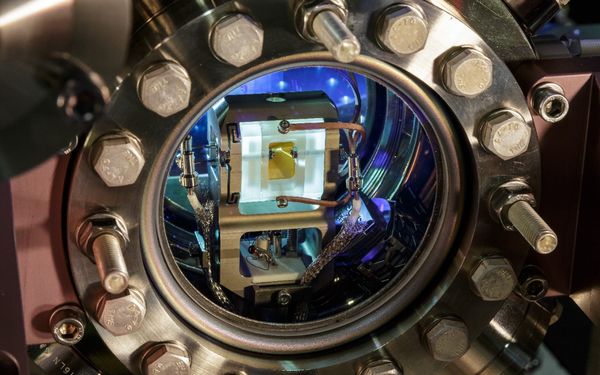
First-ever quantum simulation of chemical bonds with trapped ions
"Experiment explores important pathway for quantum chemistry In a world first, Dr Cornelius Hempel has simulated the bonds of lithium hydride and hydrogen molecules using trapped-ion qubits. This explores an important pathway for one of the first practical uses of quantum computers. An international group of researchers has achieved the world’s first multi-qubit demonstration of a quantum chemistry calculation performed on a system of trapped ions, one of the leading hardware platforms in the race to develop a universal quantum computer. The research, led by University of Sydney physicist Dr Cornelius Hempel, explores a promising pathway for developing effective ways to model chemical bonds and reactions using quantum computers. It is published today in the prestigious Physicial Review X of the American Physical Society. “Even the largest supercomputers are struggling to model accurately anything but the most basic chemistry." [...]
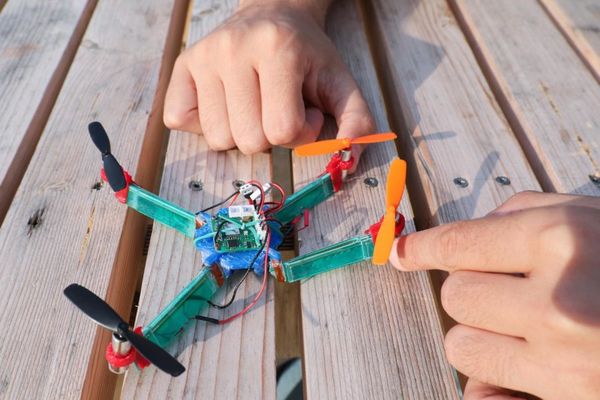
An insect-inspired drone deforms upon impact
"In recent years, robotics experts have taken a page from the traditional Japanese practice of origami and come up with light and flexible – and highly innovative – robots and drones. Two types of origami-inspired structures have emerged: rigid structures that have a certain weight-bearing capacity but that break if that capacity is exceeded, and flexible yet resilient structures that cannot carry much of a load at all. EPFL researchers, applying what they observed about insect wings, have developed a hybrid origami drone that can be stiff or flexible depending on the circumstances. When airborne, the structure is stiff enough to carry its own weight and withstand the thrust of the propellers. But if the drone runs into something, it becomes flexible in order to absorb the shock and therefore minimize any damage. This research, which is being carried out in Dario Floreano’s Laboratory of Intelligent Systems, has been published in Science Robotics." [...]
Modelos 3D
Com a disponibilidade de ferramentas que permitem dar azo a nossa imaginação na criação de peças 3D e espaços como o thingiverse para as publicar, esta rubrica apresenta alguns modelos selecionados que poderão ser úteis.
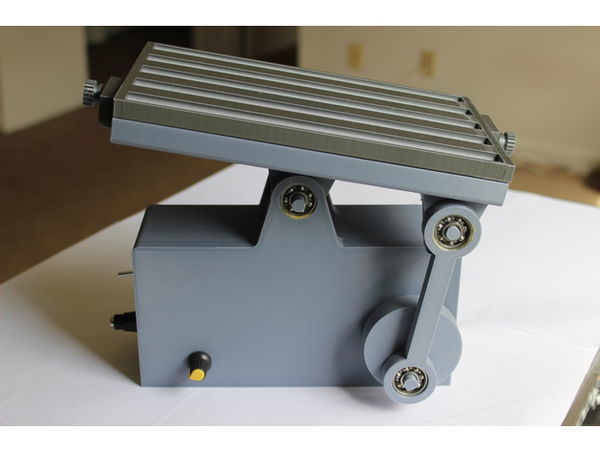
Open Source Laboratory Rocker / Mixer / Shaker (Lab Rocker)
"Here is my take on the laboratory rocker, which is a laboratory tool/device used in laboratories for mild to moderately aggressive biological and molecular mixing applications. → This variable speed, 2-dimensional rocker was completely designed in Autodesk Fusion360. → The design utilizes a changeable apparatus rack/tray/platform for holding apparatus to perform a see-saw motion for mixing content. → The rack/tray can be secure in place using the side locks on either side. → I have uploaded two types of racks/trays for this Thing: - • Single Piece Test Tube Rack • Single Piece Beaker Tray → The surface area dimension of the beaker tray are 205 x 105 millimeters. → The prototype model employs an Arduino UNO, a NEMA 17 stepper motor, EasyDriver v4.4, an external 12V DC power supply, readily available skateboard bearings and some basic electronics equipment like connector wires, potentiometers, breadboard and soldering machinery." [...]
Documentação
A documentação é parte essencial do processo de aprendizagem e a Internet além de artigos interessantes de explorar também tem alguma documentação em formato PDF interessante de ler. Todos os links aqui apresentados são para conteúdo disponibilizado livremente pelo editor do livro.
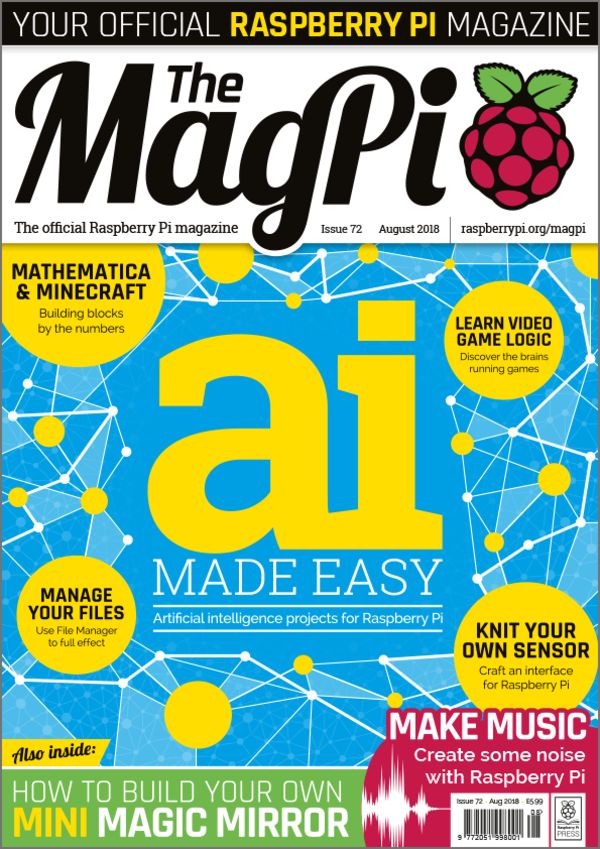
The MagPI 72
"AI doesn’t need to be tricky, so we break it down so you can understand how to make some amazing speech and image recognition projects using just your Raspberry Pi. As well as that, we show you how to build a fully-functional recording studio with your Raspberry Pi, allowing you to bring your music-making dreams to life! All this inside The MagPi 72 Make your own mini magic mirror Learn Pygame Zero – part 2 Knit your own sensor in the Pi Bakery Hack Minecraft Pi with Mathematica Get to know the file manager on Raspbian Need more details? View the contents pages for info on every article. " [...]
Projetos Maker
Diversos Projetos interessantes.

Nodmcu RFID Attendance Server With Processing
"A cool way to mark attendance. Have you ever felt the need to automate your attendance process? If yes, then this is the perfect project to work upon. Based on nodemcu, mfrc522 rfid module and processing IDE, this allows you to keep a record of whoever comes in your maker space/office. " [...]
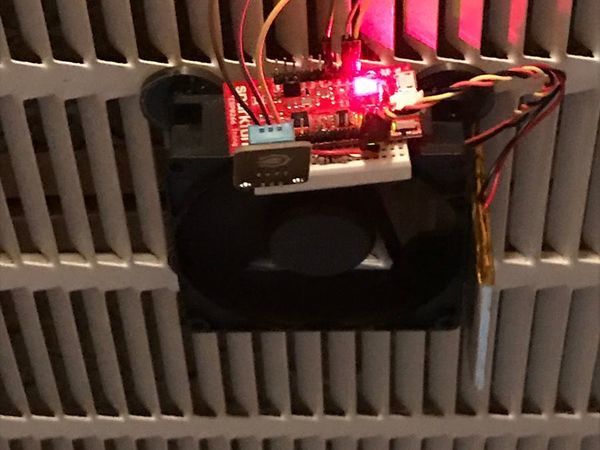
IoT HVAC Monitor
"Monitors the fan speed, on/off cycles, temperature, and humidity of my HVAC system and posts data to ThingSpeak.com. I built this project for two reasons. (1) I've been looking for an excuse to play around with IoT, and with the ESP8266 in particular. (2) My electric bill has been steadily increasing and I wanted to see how often my HVAC system was cycling on and off (and at what temperature). I figured I could monitor on/off cycles by attaching a small DC fan motor to the return air grill. When the HVAC unit turns on, the airflow will cause the fan to turn; acting as a generator." [...]

Make a Relay Modul With Optocoupler
"Introductions : Relays are mechanical switches ,compare to semi-conductor there switching time are very slow , but it switch in relatively high voltage,One example use of relays are in the Car or bike as electric ignition they increase relatively low current from the battery to high thereby igniting the engine. Descriptions : we will be making a relay modul to be use with an optocoupler , the optocoupler is the main component of our circuit it separate between the micro controller and the the circuit with higher voltage (using light ) . " [...]

Convert your old phone into a remote switch
"Have some old phones lying around? Thinking what to do with them? Here's how you can use them.....! Use your old phone as a remote control. You can just give a miscall or text your old phone to activate or deactivate your remote device. The good thing about this switch is it is operable in any part of the world where there is network connectivity." [...]
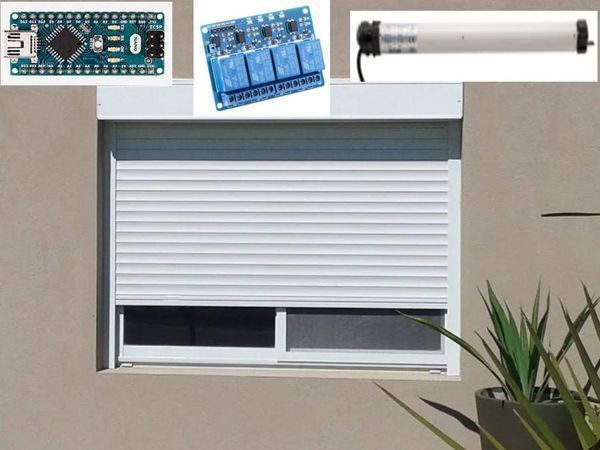
Blinds (or any high power motor) control
"How to control several blinds with inexpensive relay boards (not ruining them) with physical buttons and remotely simultaneously. Intro Just bought a new house and wanted to automate everything, starting with the blinds. What seemed to be an easy project turned out to be a bit of a nightmare: the relative high power motors (150 W) were destroying my relays and triacs, what wireless communication and controller to use and how to make it work was not obvious, noise in the lines were causing random activation of the blinds (pretty scary in the middle of the night)... Finally I managed to solve all those issues with very cheap components and hopefully I can help someone else to spare these headaches and a lot of time. Don't like to program, but love to solder? Read anyways the tutorial and at the end you find a discrete circuit, which does the same, but with no intelligence." [...]
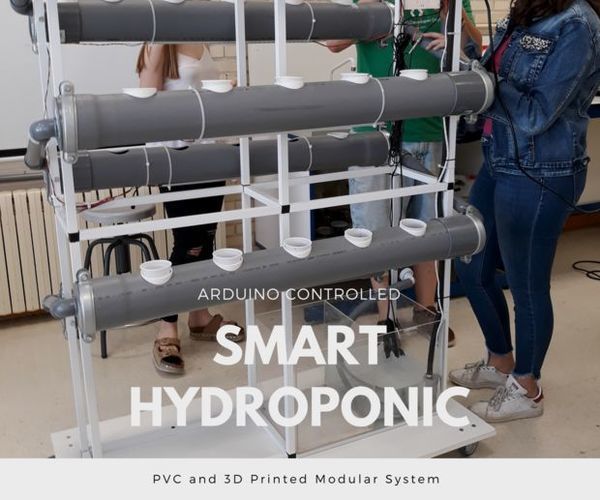
Arduino Controlled Smart Hydroponic Modular System
"We love electronic and plants, so we created a hydroponic system during the activity "Robotics in family" in the Juan de Lanuza School. We wanted to create a portable system in order to show it to all the school and to cultivate regional plants during the year. Hydroponics Hydroponics for us is not only an enjoyable hobby, it is also a green one. Hydroponics uses as little as 10% of the water needed for plants grown in dirt, and results in higher yields due to the plants always having the necessary nutrients available to them when they need it. Being a closed system it also means that fertiliser is kept out of the water table, which is great for the environment. " [...]
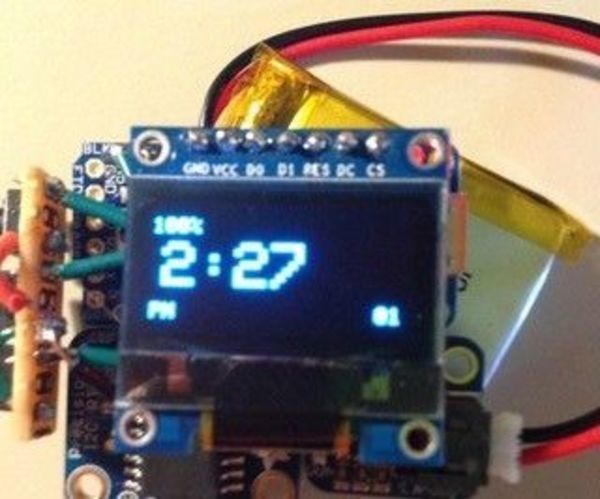
DIY Pro Trinket Smartwatch
"This is a smartwatch I made using the Adafruit Pro Trinket, and some other parts. If you have any questions, let me know, otherwise lets get started! The materials needed for this are: Adafruit Pro Trinket 3.3V: Pro Trinket, Adafruit DS3231 Precision RTC Breakout: RTC module, Adafruit LiIon/LiPoly Backpack Add-On for Pro Trinket/ItsyBitsy: Battery Backpack, Lithium Ion Polymer Battery - 3.7v 500mAh: Battery, Three Small pushbuttons (I don't know where you might get these, I found mine lying around, waiting to be used) OLED screen: Screen" [...]

Arduino HID-Based CNC Pendant
"I found the Arduino Leonardo to be a great way to manage my CNC machine with little programming effort. Why This Project? You can buy a pendant for your CNC machine, but I built my wooden CNC machine so why not make my own pendant? Besides that, a regular pendant for my controller board would cost 100 euros and have only 2 buttons and a handwheel. My pendant has 23 buttons with up to 6 functions per button and a handwheel. One comment could be, "it's large and heavy!"" [...]

Energy Meter module to analyze the electrical grid parameters and consumption
"Thanks to an innovative module, it analyses the electrical grid parameters and the consumption, by supplying them – via USB – to a computer, on which a dedicated software enables to display, collect and use the data for different applications. First installment. It is common to worry about how much electrical energy is consumed, at home or at work. In order to carry out the measurings as for voltage and current, in addition to the related measures concerning the power absorption and the power consumption, we take advantage of a series of tools that have been designed for this purpose. It may be some simple lab tools, such as for example a voltmeter or an amperometer, so that the different electric power quantities may be manually calculated, or maybe some more sophisticated tools such as the Power Meters (for example, the WT230 by Yokogawa, or similar ones) that autonomously calculate the apparent/real/reactive power, the cosφ (power factor), the network frequency, etc. Moreover, different measuring instruments for the DIN rail are available for sale (that’s the ones you may mount in your electric panel), they carry out the measurings for the electrical quantities and calculate the apparent/real/reactive power and the amount of energy absorbed by the network." [...]

Radar Glasses
"Last summer on vacation in Maine we met a very nice couple. The wife was blind and had been blind since the birth of (I think) their first child. They were a really nice couple and we had a lot of laughs together. After we came home, I couldn't stop thinking about what it would be like to be blind. The blind have seeing eye dogs and canes and I am sure a lot of other things to help them. But still, there must be a lot of challenges." [...]
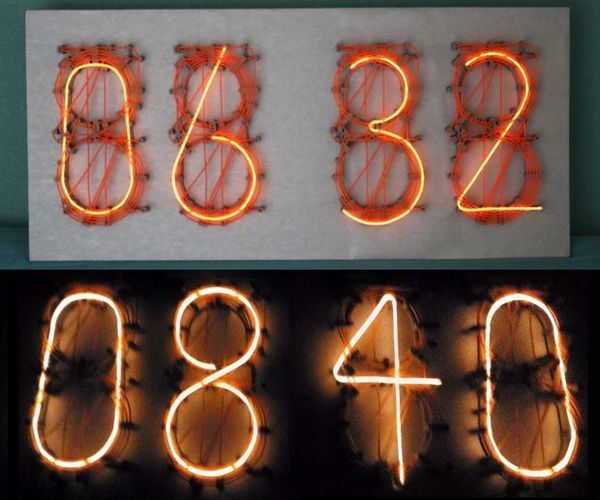
EL Wire Neon Nixie Style Clock
"This Instructable describes how to make a clock using EL wire. The design of this clock resembles a combination of a Neon sign and a Nixie clock. While creating a "Neon" name board with EL Wire, I wanted to add some animation. This resulted in some arduino controlled EL wires. And somehow I came up with the idea to create a clock using EL wire. This clock contains a total of 40 EL wires, of which 32 are controlled by an Arduino." [...]
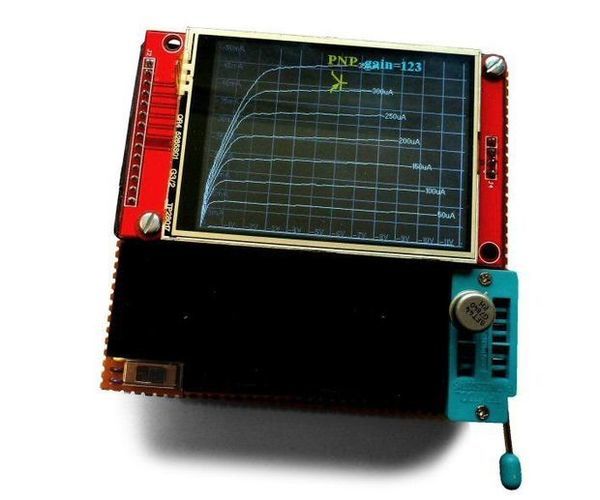
Transistor Curve Tracer
"I've always wanted a transistor curve tracer. It's the best way of understanding what a device does.Having built and used this one, I finally understand the difference between the various flavours of FET. It's useful for matching transistors measuring the gain of bipolar transistors measuring the threshold of MOSFETs measuring the cutoff of JFETs measuring the forward voltage of diodes measuring the breakdown voltage of Zeners and so on. I was very impressed when I bought one of the wonderful LCR-T4 testers by Markus Frejek and others but I wanted it to tell me more about the components so I started to design my own tester. I began by using the same screen as the LCR-T4 but it doesn't have a high enough resolution so I changed to a 320x240 2.8" LCD. It happens to be a colour touch-screen which is nice." [...]

IDC2018 IOT Smart Trash Bin
"Good waste management has become an essential issue for our planet. In public and natural spaces, many do not pay attention to the waste they leave behind. When there is no garbage collector available, it is easier to leave waste on site than bring them back. Even the so-called preserved spaces are polluted by waste. Why we need a smart waste bin? (Solution) To preserve natural areas, it is important to provide well-managed waste collection points: To prevent them from overflowing, the bins must be raised regularly." [...]

Retro Arcade Clock - Arduino
"Build an interactive arcade bedside clock, with a touchscreen, and animated arcade figures that you can record a sound of your choice for the alarm. This is an update of a previous project which now includes a 3D Printed Case and four separate programs to choose from 1. Arcade Clock - DK Mario, Space Invaders & Pacman animation 2. Pacman Clock - Interactive Animated Pacman game with clock functions 3. DK Clock - Interactive Animated DK game with clock functions 4. Tumble Ghost - Animated Pacman Ghost game based on Flappy Bird Lots of fun to build and a great gift for anyone who likes to relive the nostalgia of 80s arcade game characters" [...]

Animated RGB Wall Clock
"There is no doubt that you will love this wall clock. In this project we used RGB LED again. And of course 3d printer is very important for us. We designed and produced some of the pieces needed for our WALL CLOCK again. And it's not just a clock. It also contains different ANIMATIONS." [...]

Accidentally a Lightsaber
"So you know how you have an idea for a project but you don’t quite how to execute it. I wanted to make an electronic glow stick using ws2812, I wasn’t sure how I was going to do the ws2812 part because normally they come on a PCB or in a 5050 SMD package. This is when I found the ws2811 8mm LED’s. Follow long with me on how I came to make a light saber and not an electronic glow stick" [...]
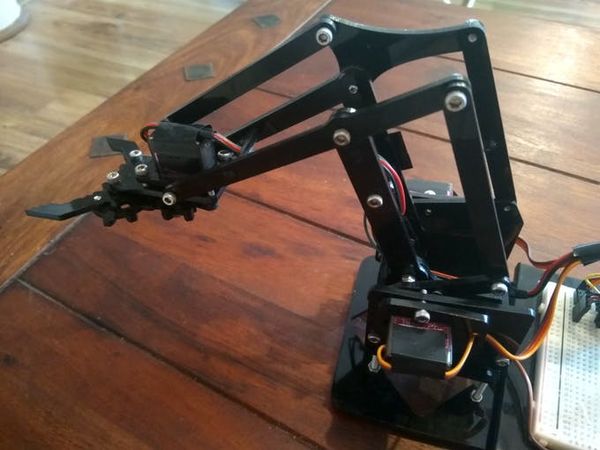
Robot Arm Controlled Through Ethernet
"Build and control a simple robot arm from anywhere in the world! Story Introduction I love robot arms. I like that you just need some simple mechanical parts, some servos or motors a good software and you can get a device that is not just spectacular and fun but actually really useful, too. I wanted to build one since I had a robotics course that I really loved. You can learn a lot when you build a robot arm, so I think this is a great intermediate level project to deepen your knowledge in robotics. Lets start!" [...]

DIY Heat Sinks
"In a recent thread on Head-Fi, someone asked how well a paperclip would work for heat-sinking a TO-220 part. Much speculation ensued (much of it from your humble author), including opinions that a penny might work better, and then the argument moved on to exactly how to use the penny and so on. I eventually decided that experimentation was called for, which lead to this article. Test Setup I configured six LM317s as 0.125 A current sources propped up by silicon diodes. The diodes are remnants of a discarded idea, so their only purpose in this version of the test was as a place to clip the negative-side power lead. I then attached different heat sinks to each current source, put approximately 18 V across each one in turn, and recorded their temperature over time." [...]

Kids RGB LED Star Nightlight
"I love making projects for my kids and I also love making projects using RGB LEDs, so I came up with the idea of a light detecting RGB Star shaped Nightlight for my kids rooms. The nightlight can detect if it is in darkness and turn on the RGB LEDs to 50% brightness, and then dim them back to 10% brightness over an hour. If the nightlight detects it is in light, it will turn off the LEDs which of course, also saves battery life. The star is 3D printed and uses a TinyDev Tiny85 board to control the LEDs, because it has super low power consumption and is only 26mm x 9mm in size, the same width as an RGB strip, but you can of course substitute the TinyDev with any Arduino compatible micro controller. The nightlight runs off 2x AA batteries. " [...]
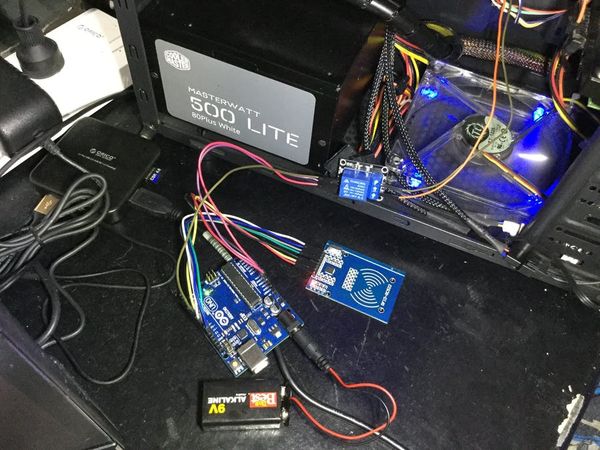
RFID+Relay+RFID Door Lock Code = RFID PC Switch!
"A simple RFID controlled relay module to turn your PC on/off. This project is about adding an optional security feature besides the password on your personal computer. I've decided to use an RFID + relay door lock code that I have found on Youtube out of curiosity and because I thought, "Hey! They both have the same modules, maybe the code can be the same, too!" Basically, you need to get the UID's from the RFID cards or tags/keys first using the example codes from the MFRC522 Library (I used DumpInfo) [https://github.com/miguelbalboa/rfid]. Then, add the UID on the code to allow it to activate the relay and turn on the desktop PC." [...]

DIY Light Alarm Clock
"Have you ever wanted to try one of those fancy alarm clocks that mimics the sunrise to wake you up? Do you want to add some colored lights to your room? Do you want to control it all from any device with an internet browser? Then check out this alarm clock I made using what I learned building my automatic fish feeder. The Light Alarm's main purpose is to make sure there is light in my room when I wake up, especially in the winter time when it's usually still dark out. The light fades in for a predetermined length of time that ends in full brightness at the set alarm time." [...]
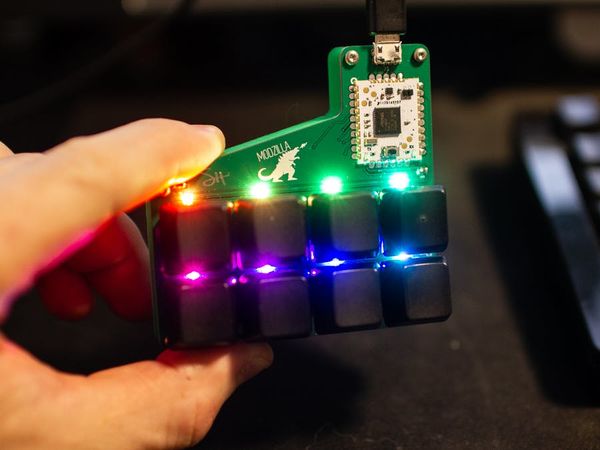
DIY RGB Cherry MX Macro Board
"An 8-button mechanical switch macro keypad with RGB lighting! This is a demo board to showcase the HCC Module, but its cool enough to be its own tutorial. I've done a macro board in the past, but I really wanted to do one with Cherry MX Mechanical switches. So here it is! The Modzilla. " [...]

Saving Battery Life With Deep Sleep
"Are you interested in using a battery with your ESP32? If so, Ill be discussing today some important technical information concerning this subject. We know that this microcontroller spends a lot of energy when it transmits information. It consumes close to 190 milliamps. In this video, Ill show how to conserve energy from the ESP32 with the so-called "DEEP SLEEP" function. Well set the chip to enter this mode, learn the ways to exit this mode, and create an example showing three different ways to wake the ESP32." [...]

Clock With IR Remote Control for Time/Date Settings
"This is a simple clock made using readily available components. The Microcontroller used is an inexpensive STM32F030F4P6. The display is a 16x2 LCD with I2C backpack (PCF8574). The clock circuit can be built using small prototyping boards and a TSSOP28 adapter board, as shown. " [...]
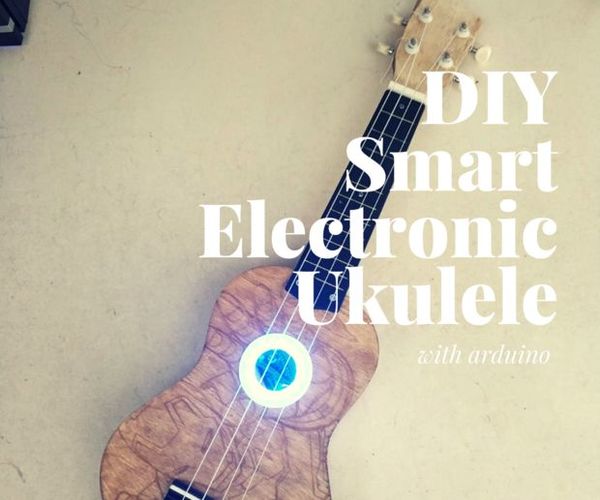
DIY Smart Electronic Ukulele With Arduino
"We are going to explain step by step how you can design your own ukulele and add some effects that will make it unique, like drawing something that we want on the surface of the ukulele or adding some light effects. To make that, is necessary to buy a ukulele kit. We are going to explain how to assemble the instrument, and solve the different problems that could appear. " [...]
IDC2018IOT Leg Running Tracker
"We came out with this idea as part of the "Internet Of Things" course at IDC Herzliya. The project's goal is to enhance physical activities that involve running or walking using NodeMCU, a few sensors and a could server. The result of this project is a very useful IOT device that can be turned in the future to a real production product that will be used everywhere! Please let us know what you think :) Before you start, make sure you have: * NodeMCU device. * 1 Piezoelectric sensor. * MPU6050 sensor." [...]
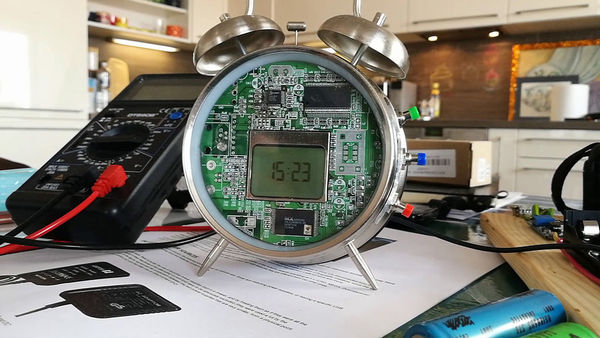
Weather Forecast Clock Using Old Alarm and Arduino
"I had a broken alarm clock lying around and came up with an idea to convert it to clock and weather forecasting station. For this project you will need: Old circular alarm clock Arduino Nano BME280 sensor module (temp, humidity, pressure) LCD display module from Nokia 5110 DS1307 RTC clock TP4056 Lithium battery charger Old Li-ion battery salvaged from mobile phone Small 3.7v to 5v booster module Light Dependent Resistor (LDR - light meter) Buzzer (used salvaged one from old PC) 3 push buttons A bunch of resistors (2x10k, 270 ohm) and a transistor (2N2222A or similar) Some wide shrink tube scrap PCB to use as front plate decoration Micro-USB extension cable (both female and male sides are Micro-USB) 2x8cm prototype board and some wires" [...]
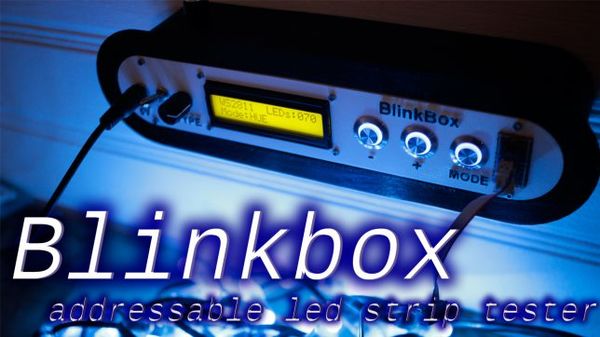
BlinkBox - A test tool for addressable LED development
"I work with addressable LEDs a lot. For all that they’re great for, they’re kind of hard to debug when you have a lot of them connected up at once. This is especially apparent when you have many small single modules in hard to reach spaces. This lets me set the color and number of LEDs in a strip, and then displays a color pattern. This way I can tell if an LED has become disconnected in a strip, or if a channel inside a particular has died. Features Select LED type with the type switch, 4 positions Can test up to 400 LEDs at a time, if you can find a worthy power supply 3 Test modes RGB – 1 second red, 1 second green, 1 second blue HUE – Lock strip at HSV (x, 255, 255) and x loops from 0-255 WHTE – Set the strip to RGB(255, 255, 255) Count and Mode are saved into eeprom, so you don’t have to keep resetting the strip if it powers off Wall mount fittings Design Explanation All of the raw code solidworks, and KiCAD have been posted on my github." [...]
That's all Folks!


